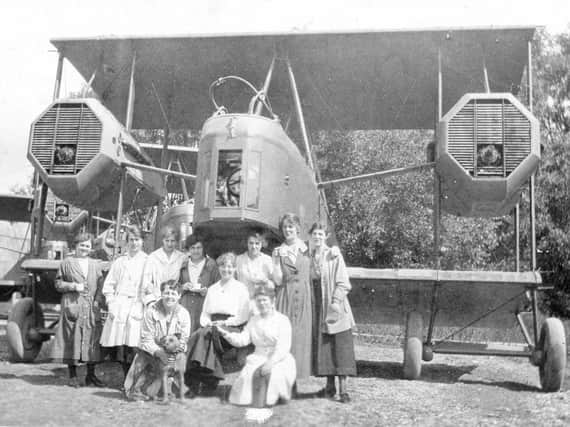How First World War armistice cost 1,000 Leighton Buzzard people their jobs


Industries vital to the war effort were in full production in Leighton Buzzard and Linslade in November 1918. While great relief greeted the armistice on November 11, the peace soon cost more than 1,000 people their jobs.Morgan’s in Linslade, with its factory where Tesco and Homebase now stand, employed more than 800 men and women making aeroplanes for the front, at the rate of three a week, including the new Vimy bomber. For many women, this was their first job, sewing the canvas on the wings of the aircraft.In Grovebury Road was a large factory making submarine nets. The nets made here and in the Corn Exchange and in Lake Street were sent by rail to ports to protect shipping from U-boat attacks, and also to our Allies in France, Italy, Russia, and the United States.The look of the town had been also been transformed by the sand industry in the war years. The Ministry of Munitions ordered all quarries to work at full production to provide moulds so the nation’s foundries could make heavy guns and equipment for the Western front. The town’s roads were so mashed up by the traction engines used to ferry the sand from the quarries to the canal and railways that streets were often impassable for ordinary traffic.The day peace was declared all contracts for submarine nets for the Admiralty were cancelled and within weeks over 400 men at the three factories were laid off. The company sold its equipment and closed down in Leighton.Most orders for planes from Morgan’s were also cancelled and 500 men and women were given two weeks’ pay and told to leave. The company reverted to making cars, but never mastered mass production, and closed in the 1920s.The sand industry faced serious disruption. The week the war ended, the Ministry of Munitions cancelled its commitment for the government to repair the town’s roads at the taxpayer’s expense. The people of Leighton Buzzard immediately refused to allow traction engines on their roads, to get sand to the railway and the canal.Quarry owners had the brainwave of buying the fully armoured locomotives and the narrow gauge railway lines used to get troops and supplies to the front in France. Within a year of the peace, they were ferrying sand to the canal and the railway. One of the extraordinary sights of this new railway was the fully armoured locomotives. The armour was so heavy that it proved impossible to remove from the engines and so they looked exactly the same as they had at the front.The armoured trains were later scrapped and replaced but the light railway is one legacy of the war still remains in Leighton. Extracted from the book Sand, Planes, and Submarines, How Leighton Buzzard Shortened the First World War, published by History Press and researched by the Leighton Buzzard Archaeological and Historical Society.